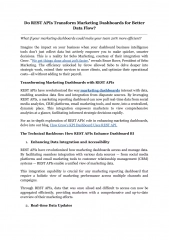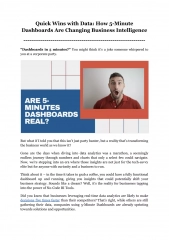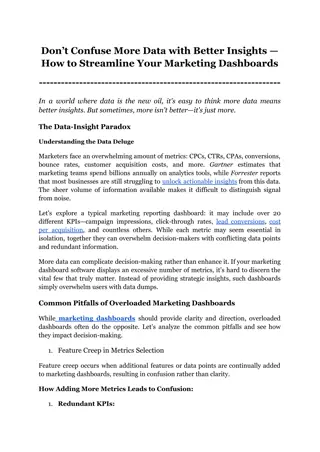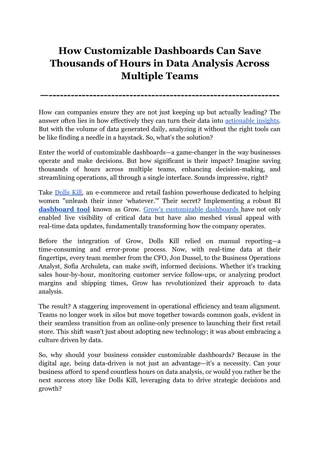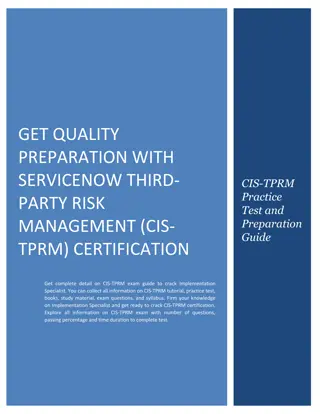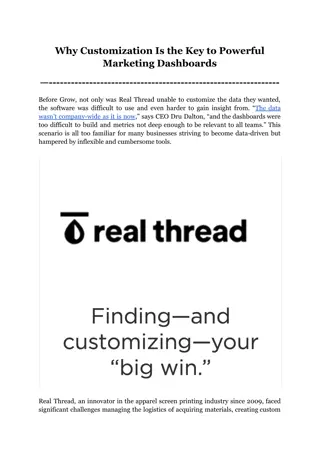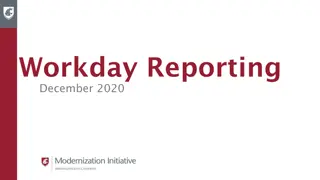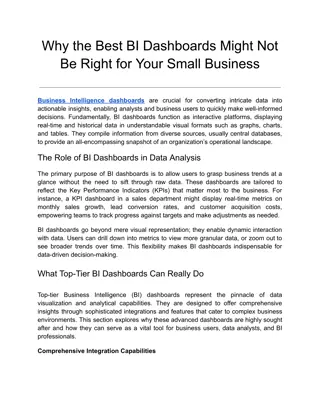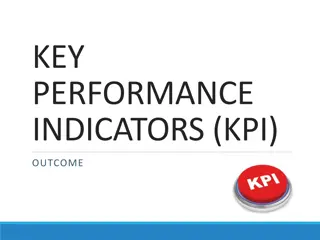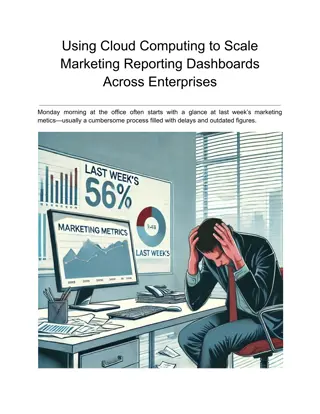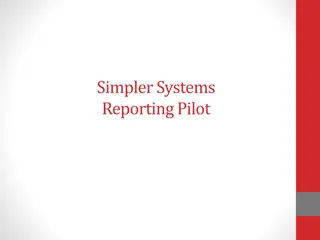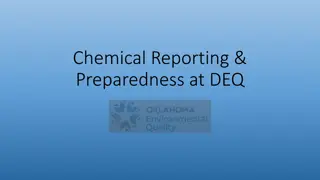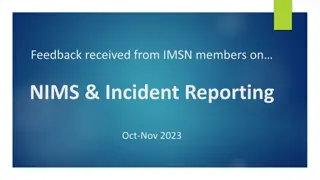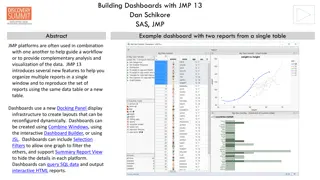
Database Reports, Dashboards, and North Star Metric
Explore the significance of database reports and dashboards for data visualization, performance tracking, and decision-making. Learn how the North Star Metric helps businesses focus on key success factors.
Download Presentation

Please find below an Image/Link to download the presentation.
The content on the website is provided AS IS for your information and personal use only. It may not be sold, licensed, or shared on other websites without obtaining consent from the author. If you encounter any issues during the download, it is possible that the publisher has removed the file from their server.
You are allowed to download the files provided on this website for personal or commercial use, subject to the condition that they are used lawfully. All files are the property of their respective owners.
The content on the website is provided AS IS for your information and personal use only. It may not be sold, licensed, or shared on other websites without obtaining consent from the author.
E N D
Presentation Transcript
Week 14 REPORTING AND DASHBOARDS
What are Database Reports A database report is a way to see important info from the database Reports can be done by hand or done automatically by the software that is running the database, or a combo of both Reports can be done at assigned times or by a predetermined condition, and run by the software, or done by hand Reports can be used for everything from sales data, to details about users, to totally customized drilled down data depending on what's needed
What is a dashboard A dash board is a way to show information visually, it's made up of widgets Widgets are a way to show small pieces of the data that are really important performance or metrics You can have multiple dashboards for different audiences, for example, one for system metrics such as does the database have enough free space and memory that a DBA would want to care about. But then you can have another dashboard for users that would care about different things such as books checked out, or inventory levels.
Why we use reports and dashboards We use reports for everything from presentations to C-suite people to compliance requirements Reports are usually static pieces of information that are true for that moment in time Dashboards are made of widgets, usually updated on a reliable time frame such as hourly, daily or weekly Dashboards are good ways to keep track of things to see problems immediately and fix them, reports are good for seeing what happened or seeing where the system is at one point Both will take metrics and performance and present them in different ways Both take the data and present it in a structured coherent way so you can make informed decisions
North Star Metric Focus on the important information, don't clutter the visualization Being able to identify ways to get rid of things on a dashboard is valuable, you don't want to have more information or the wrong information getting in the way North Star Metric is a way to focus on the most important value without getting led astray The North Star is your key measure for success, it's used commonly for product led companies Picking your North Star Metric is aligned with your customer values and product (also known as how the company says they are making the most money)
Example: Good report and Dashboard Good Report Good Dashboard Clear purpose Focused on the key metrics Uses data visualizations to communicate important take aways from the data Data is up to date, cleaned, and doesn't contain extraneous information https://www. matillion.com /blog/dashbo ard- examples- the-good- the-bad-and- the-ugly Includes an action item
Example: Bad report and Dashboard Bad Report Bad Dashboard Too much clutter Too long Shows raw data without context Shows bad, inconsistent or old data https://deliveringdataanalytics.com/i-tried-my-hand-at- designing-the-worst-dashboard-i-could-imagine/
Some different ways to have bad Dashboards System metrics that are easy to make into a widget and are actually irrelevant such as I/O on a system that doesn't I/O Multiple representations for the same concept, for example looking at both the books checked out and authors checked out, yes we can track both, but do we really care? Proxy information instead of actual information, for example memory for book checkouts, yes it goes up with more people checking out books, but why not just look at book checkout numbers Simulate a dashboard by running a report frequently and calling live information
Some example reporting tools Open Source options include Business Intelligence and Reporting Tools (BIRT) Project, and the ones built into LibreOffice Base There are also tools that are sold such as Splunk, Tableau, ZoHo Analytics, Power BI Oracle. Some will have dashboard options as well as reports since they are both commonly used https://en.wikipedia.org/wiki/BIRT_Project#/ media/File:Eclipse_BIRT_Report_Designer.pn g
Some example dashboards https://www.tableau.com/dashboard/dashb oard-examples https://learn.microsoft.com/en- us/power-bi/create-reports/sample- dataset Other examples include: Oracle Analytics Cloud, Domo and AWS QuickSight
How to pick if you need a dashboard or a report or both Dashboard Report You need updating information You need to turn in information from a snapshot in time You need to watch over time for key metrics You need to turn in a summary for a meeting or compliance requirement You need to see problems before they happen You need to look at why a problem happened and do a post mortem You need alerts for key metrics and/or performance You need static information/data
Some example use cases Report Giving a presentation or Executive summary of a database to higher ups in a company Dashboard Keep track of the VM running the database to make sure there aren't provisioning issues and no slow downs Report Analyse specific issues that are going on, such as healthcare appointments being scheduled too frequently Dashboard Monitor health of code release Report Compliance, most places that have to follow compliance laws and regulations for their industry are required or strongly encouraged to turn in reports that correspond to the stated findings Dashboard Predicting issues before they happen, such as trying to head off support tickets before customers can complain

